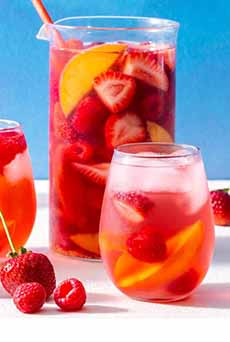The History Of Sangria & 15 Sangria Recipes For National Sangria Day
|
December 20th is National Sangria Day. The word derives from the Spanish word for bloodletting, and refers to the red wine that was used as a base for the punch. While many of us think of sangria as a summer cooler, red sangria is the perfect color to celebrate the holidays. Sangria’s ancestors are a Roman drink called “hippocras” (wine, sugar, spices and other ingredients). Around 200 B.C.E., the conquering Romans arrived in Spain and planted vineyards. They soon discovered that red grape varietals produced the best wine in the local soils. The locals created fruit punches from the wines, and called these drinks sangria after the color. While sangria was drunk in Spain for more than 1,000 years, it didn’t arrive in the U.S. until the 1964 World’s Fair in New York City. It was served at the Spanish Pavilion, and quickly made its way into American homes and restaurants. Sangria is available in bottles, ready to drink. Since January 2014, the use of the word “sangria” on bottle labels is restricted by the European Union. Only sangria made in Spain and Portugal can be sold under that name. Here’s more about sangria Sangria is made with wine, a spirit or liqueur, club soda, ginger ale, or another sparkling element (including sparkling wine), fruit, and sometimes, a sweetener. In Spain, sangria is typically made with Rioja or another local red wine. While some people feel that the cheapest wine will suffice because the flavor gets blended with these other ingredients, we recommend using a good (not great) quality wine. Let “quality” refer to anything you’d be happy to drink straight from the glass. Ideally, the sangria—without the soda water—should be allowed to chill overnight for the flavors to meld. The chilled soda water or other sparkling beverage should be added right before serving. To serve, pour the sangria into a pitcher filled with ice cubes and garnish with more fresh fruit. |
|
|
|
|
||




